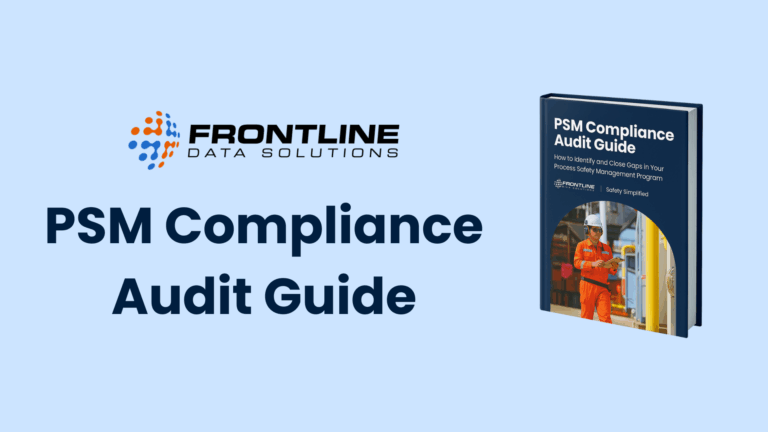In the United States, the history of process safety management is a relatively short one. OSHA’s PSM standard addresses the potential dangers of hazardous chemicals with the goal of controlling and eliminating them.
PSM Compliance Audit Guide
Download this guide to review your program’s compliance with each line of the OSHA PSM standard.
Chemical incidents in the 1900s
In the 1900s, there were several incidents involving highly hazardous chemicals across the world. Here are just some examples of the damage that these incidents caused:
Oppau, Germany: 500 to 600 people died after a storage tower of ammonium nitrate and ammonium sulfated exploded.
Flixborough, UK: An explosion of cyclohexane killed 28 people and injured another 36 after several attempts to control leaks earlier in the year failed.
Bhopal, India: More than 40 tons of methyl isocyanate leaked into the atmosphere and caused at least 3,800 deaths.
Pasadena, USA: Several gas explosions occurred at a Phillips Petroleum plant, killing 23 employees and injuring more than 300 others.
This last example, which happened in the United States, was the catalyst for major health and safety reform. During the investigation, OSHA determined that the plant’s process safety control measures were inadequate for the high-risk nature of its chemical inputs. This began the process of developing OSHA’s PSM standard.

New PSM legislation in the 1990s
In 1989, President George H.W. Bush proposed several changes to the Clean Air Act which addressed air emissions and pollution threats. Congress approved many of these changes and passed the Clean Air Act Amendments of 1990 shortly after.
These amendments required the Department of Labor to implement process safety standards for companies using highly hazardous chemicals. So, in 1992, OSHA introduced PSM standard 29 CFR 1910.119 to do just that.
The goal of the PSM standard is to control hazards that result from dangerous chemical releases. It includes 14 separate elements that businesses must implement and follow. You can read more about each PSM element in this post.
By following these guidelines, companies should be better able to identify, control, and eliminate (where possible) chemical hazards. This, in turn, helps reduce the number of explosions, fires, uncontained reactions, and environmental contamination events in the U.S.
Application of process safety management
Even though the history of process safety management technically only dates to the 1990s, it has made significant improvements in worker safety. The requirements outlined in the standard make it easier for companies to focus on critical areas of process safety. At the end of the day, however, it’s up to the companies themselves to implement and enforce their own control measures.
Under 29 CFT 1910.119, companies must simply have a program in place that covers all 14 PSM elements. But it doesn’t exactly spell out how to do that. For many companies, this lack of clarity makes it difficult to implement an effective process safety program.
And like all EHS programs, process safety needs are always changing. So, it’s not a “set it and forget it” type of system. Instead, companies must perform regular audits to ensure that their program covers OSHA’s requirements and is actually effective at controlling hazards.
Many companies seek out the help of process safety engineers and consultants to find ways to improve their programs. And management of change software is another common tool that businesses use to ensure the safe implementation of changes.
The first step in compliance is determining which of your chemicals (and thereby processes) apply to PSM. For a list of all the chemicals that fall under OSHA’s PSM standard, click here. Download our Process Safety Management Checklist to get an idea of what to document for your own PSM program.





